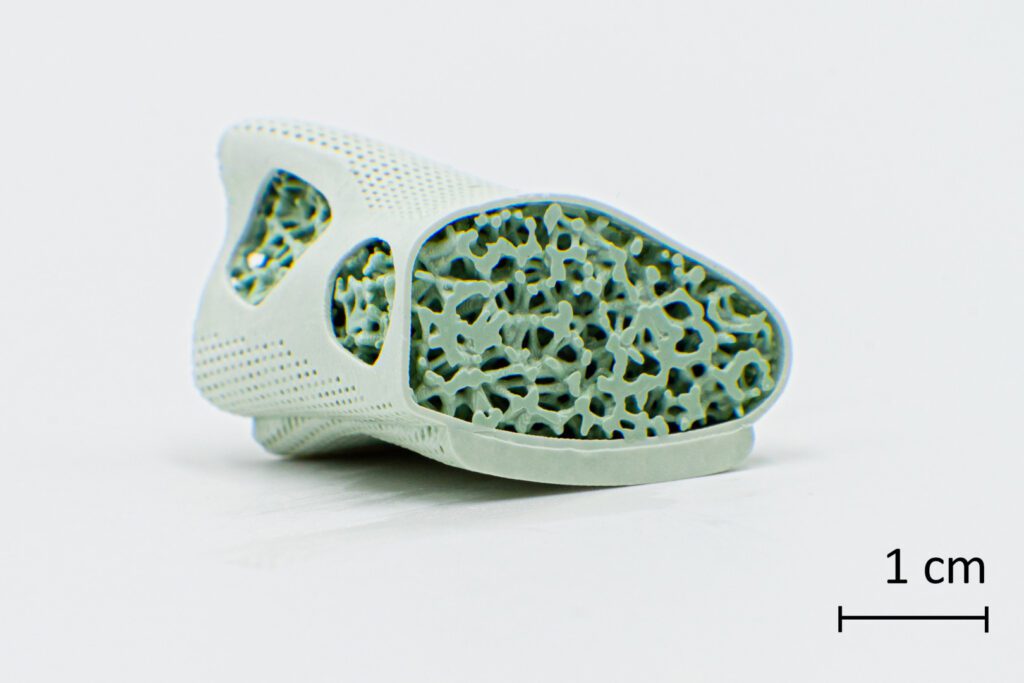Characterized by its ability to print with two materials simultaneously, the LED-driven machine allows for the production of parts containing combinations of ceramics, polymers, and even metals. As such, the 2M30 is primarily aimed at aerospace, biomedical, energy, and electronics manufacturers seeking multi-material, multi-functional 3D printing capabilities.
The power of functionally-graded parts
The ability to print with two materials enables gradual changes in a part’s material composition and microstructure, paving the way for customizable functionally-graded structures that would otherwise be impossible. Take, for example, a load-bearing coupling component – one that experiences different levels of stress at various load zones. To accommodate the varying loads, this component would require a unique combination of properties, such as fracture toughness and hardness, to perform its role in an optimal manner and maximize its service life.
It’s not just strength-based qualities either, as the CeraFab Multi 2M30 allows for a plethora of property combinations, such as dense/porous parts, electrically conductive/insulating parts, transparent/opaque parts, and even magnetic/non-magnetic parts. These combinations can be achieved within single layers, as well as between layers, providing a great deal of design freedom.
Multi-material 3D printing for bone implants
One major application of the technology that has already been identified is the production of biomedical implants, specifically those emulating bone structures. In humans, bones feature dense exteriors and lighter porous interiors, whereby the shell provides structural integrity and the marrow within serves to produce blood cells.
As part of a case study, Lithoz used its new technology to 3D print a mandibular cage implant to mimic this variation in bone structure. A high-strength zirconia was used for the outer shell, providing ample support during the healing phase post-operation. The inner volume, on the other hand, comprised bioresorbable materials. The mixture, while promoting bone regrowth, will eventually be completely absorbed by the patient’s body, resulting in an unobtrusive healing phase.
Metal and polymer combinations
Seeing as the new system is compatible with metals and polymers as well, Lithoz has also stated that it could have major implications for more advanced applications that rely on layered material stacks.
Using metals, these applications include printed circuit boards, piezoelectric stacks, low and high temperature co-fired ceramics (LTCCs and HTCCs), embedded sensors, and energy storage devices to name a few. Within one print job, green dielectric layers can be stacked on top of printed circuitry, vastly reducing the number of steps needed to fabricate electronics. Internet of Things (IoT) devices can also take advantage of multi-material 3D printing to create smart sensors within everyday objects.
In the polymer world, inexpensive plastics can be used as sacrificial support material, allowing users to precisely control the internal porosity of a part by burning the polymer out to form cavities.
Readers interested in purchasing the machine can visit the Lithoz website or contact the company at sales@lithoz.com to request a quote. For more information on the details of the technology, how it works, and the technical specifications, you can view the system’s technical data sheet here.

